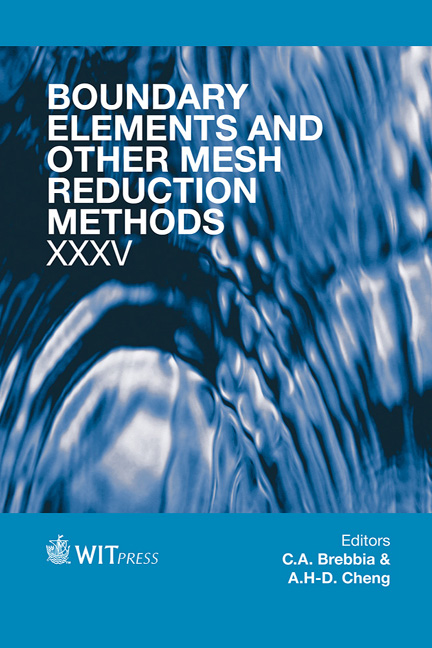Coupled Multi-domain BEM And FEM For Fluid-structure Interaction Analysis
Price
Free (open access)
Transaction
Volume
54
Pages
12
Page Range
33 - 44
Published
2013
Size
474 kb
Paper DOI
10.2495/BEM130041
Copyright
WIT Press
Author(s)
V. Gnitko, V. Naumenko, U. Ogorodnyk & E. Strelnikova
Abstract
The method for dynamic analysis of shell structures interacting with a liquid is presented in this paper. The coupled problem is solved using a combination of reduced boundary and finite element methods. The axisymmetric structures, such as compound shells of revolution with internal baffles and Francis turbine wheel, are under consideration. The compound shell was the model of capacity for liquid storage. The tank structure is modelled by the finite element method and the fluid region is described by the direct boundary element method. The method relies on determining the fluid pressure from the system of singular integral equations using multi-domain approach. After applying the direct boundary element formulation in every sub-domain, the final system of equations with sparse matrix was obtained by use of matching conditions in the interfaces between sub-domains. The shell is considered as thin one, and Kirghoff–Lave linear theory hypotheses are applied. The liquid is ideal and incompressible. Differential equations of transient problem are solved numerically by the Runge– Kutta method of 4th and 5th order. Numerical investigations of free and forced vibrations of the compound shells filled with the incompressible fluid under different loadings have been carried out. The example of the shell structure in a form of the Francis turbine sector is also under consideration. Here, a multidomain approach was compared with the hypersingular integral equation method. Keywords: fluid-structure interaction, free and forced vibrations, boundary and finite element methods, multi-domain approach.
Keywords
fluid-structure interaction, free and forced vibrations, boundary andfinite element methods, multi-domain approach





